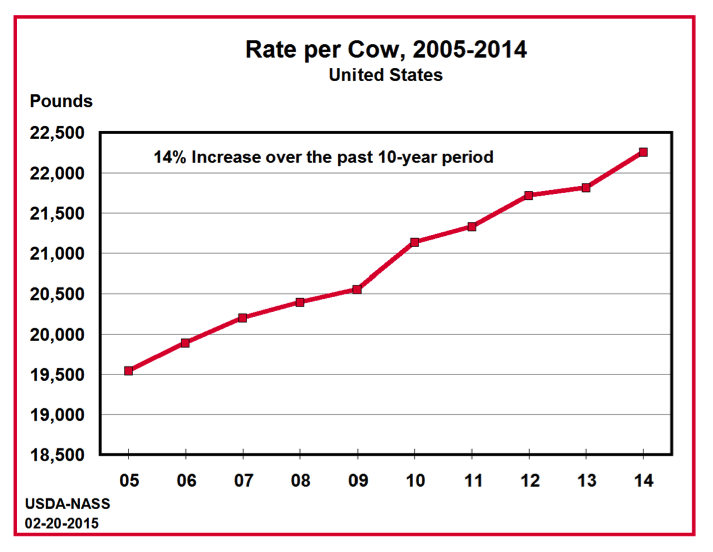

August 2015
Today’s dairy cow is producing more milk than ever before, and more than was even imagined a generation ago (see graph below). That means that the cow’s requirements for nutrients are higher than ever to achieve that phenomenal production level. Those nutrients are needed to maintain her body condition, produce milk, and finally, produce a calf.
At an ADSA DISCOVER conference, which focused on protein and amino acids, it was noted that ration protein levels have actually been going down while milk production has been paradoxically increasing.
Why have ration protein levels been declining? There are a few reasons:
Milk urea nitrogen (MUN) is a particularly important tool for practically measuring results and making adjustments to dairy rations. You can use the following MUN criteria to help determine adequate protein levels:

While key to dairy nutrition, protein is generally an expensive feed ingredient. Pinpointing the feeding of protein to reduce the level in a diet through a better use of feed ingredients can help lower costs. As our knowledge of ration ingredients continues to evolve, recent research has shown that canola meal is an effective protein source in dairy rations. By producing more milk with less protein, dairy farmers are tackling the issue of environmental stewardship head on, and winning!